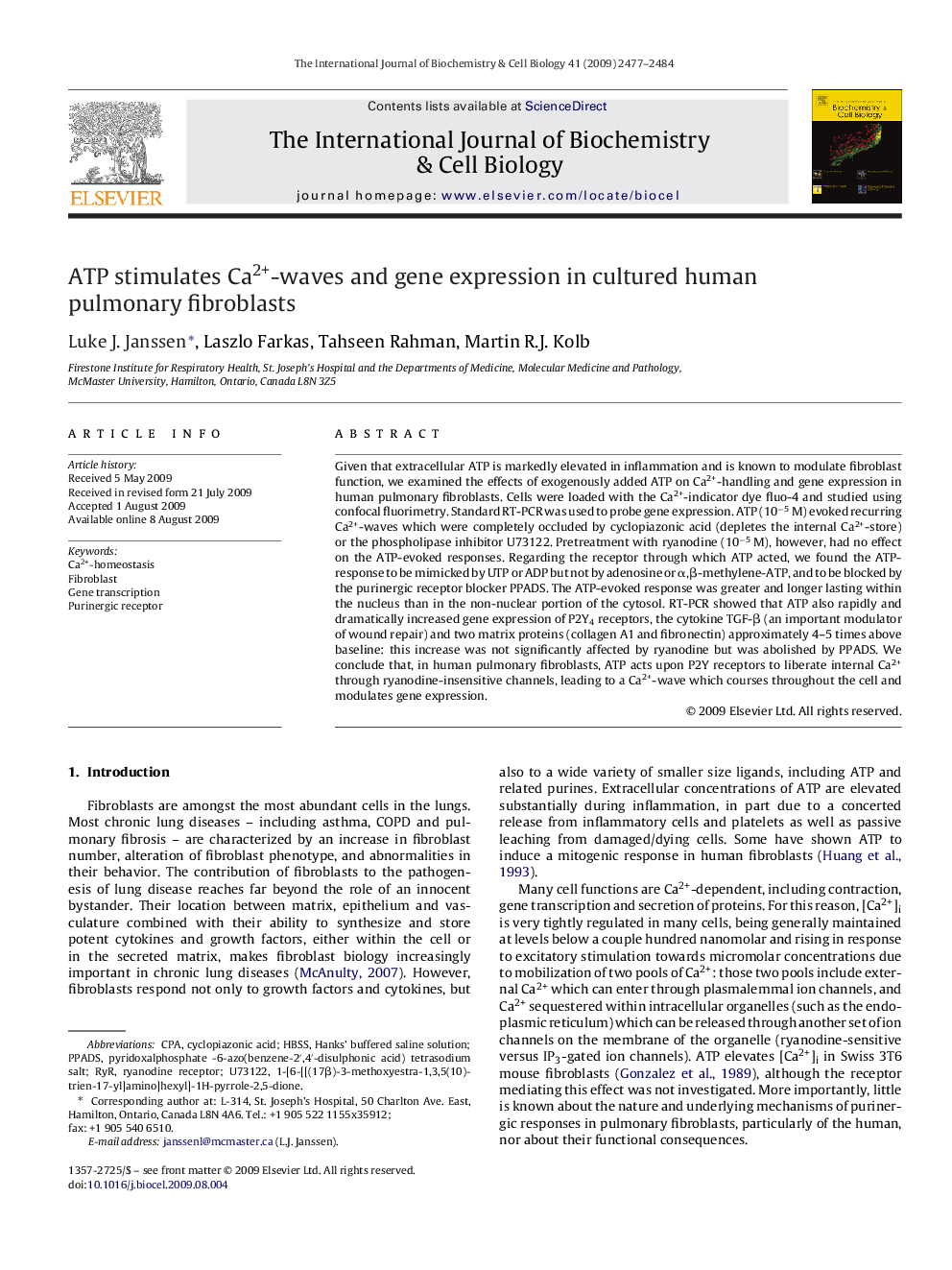| کد مقاله | کد نشریه | سال انتشار | مقاله انگلیسی | نسخه تمام متن |
|---|---|---|---|---|
| 1984203 | 1539947 | 2009 | 8 صفحه PDF | دانلود رایگان |

Given that extracellular ATP is markedly elevated in inflammation and is known to modulate fibroblast function, we examined the effects of exogenously added ATP on Ca2+-handling and gene expression in human pulmonary fibroblasts. Cells were loaded with the Ca2+-indicator dye fluo-4 and studied using confocal fluorimetry. Standard RT-PCR was used to probe gene expression. ATP (10−5 M) evoked recurring Ca2+-waves which were completely occluded by cyclopiazonic acid (depletes the internal Ca2+-store) or the phospholipase inhibitor U73122. Pretreatment with ryanodine (10−5 M), however, had no effect on the ATP-evoked responses. Regarding the receptor through which ATP acted, we found the ATP-response to be mimicked by UTP or ADP but not by adenosine or α,β-methylene-ATP, and to be blocked by the purinergic receptor blocker PPADS. The ATP-evoked response was greater and longer lasting within the nucleus than in the non-nuclear portion of the cytosol. RT-PCR showed that ATP also rapidly and dramatically increased gene expression of P2Y4 receptors, the cytokine TGF-β (an important modulator of wound repair) and two matrix proteins (collagen A1 and fibronectin) approximately 4–5 times above baseline: this increase was not significantly affected by ryanodine but was abolished by PPADS. We conclude that, in human pulmonary fibroblasts, ATP acts upon P2Y receptors to liberate internal Ca2+ through ryanodine-insensitive channels, leading to a Ca2+-wave which courses throughout the cell and modulates gene expression.
Journal: The International Journal of Biochemistry & Cell Biology - Volume 41, Issue 12, December 2009, Pages 2477–2484